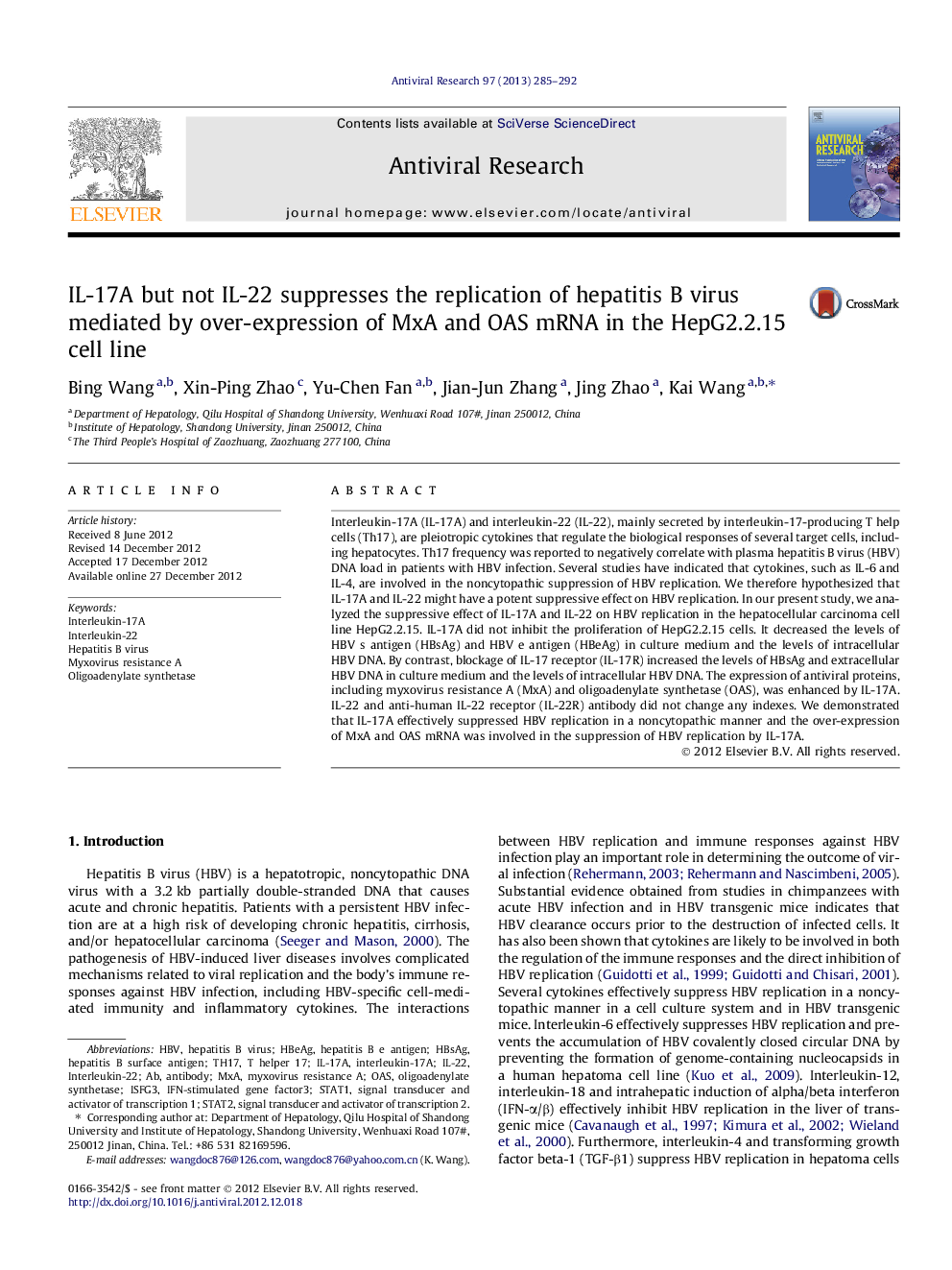| Article ID | Journal | Published Year | Pages | File Type |
|---|---|---|---|---|
| 5822626 | Antiviral Research | 2013 | 8 Pages |
Interleukin-17A (IL-17A) and interleukin-22 (IL-22), mainly secreted by interleukin-17-producing T help cells (Th17), are pleiotropic cytokines that regulate the biological responses of several target cells, including hepatocytes. Th17 frequency was reported to negatively correlate with plasma hepatitis B virus (HBV) DNA load in patients with HBV infection. Several studies have indicated that cytokines, such as IL-6 and IL-4, are involved in the noncytopathic suppression of HBV replication. We therefore hypothesized that IL-17A and IL-22 might have a potent suppressive effect on HBV replication. In our present study, we analyzed the suppressive effect of IL-17A and IL-22 on HBV replication in the hepatocellular carcinoma cell line HepG2.2.15. IL-17A did not inhibit the proliferation of HepG2.2.15 cells. It decreased the levels of HBV s antigen (HBsAg) and HBV e antigen (HBeAg) in culture medium and the levels of intracellular HBV DNA. By contrast, blockage of IL-17 receptor (IL-17R) increased the levels of HBsAg and extracellular HBV DNA in culture medium and the levels of intracellular HBV DNA. The expression of antiviral proteins, including myxovirus resistance A (MxA) and oligoadenylate synthetase (OAS), was enhanced by IL-17A. IL-22 and anti-human IL-22 receptor (IL-22R) antibody did not change any indexes. We demonstrated that IL-17A effectively suppressed HBV replication in a noncytopathic manner and the over-expression of MxA and OAS mRNA was involved in the suppression of HBV replication by IL-17A.
⺠IL-17A and IL-22 participate in the pathogenesis of hepatitis B. ⺠IL-17A but not IL-22 could effectively suppress HBV replication. ⺠The over-expression of MxA and OAS was involved in the effect of IL-17A.
